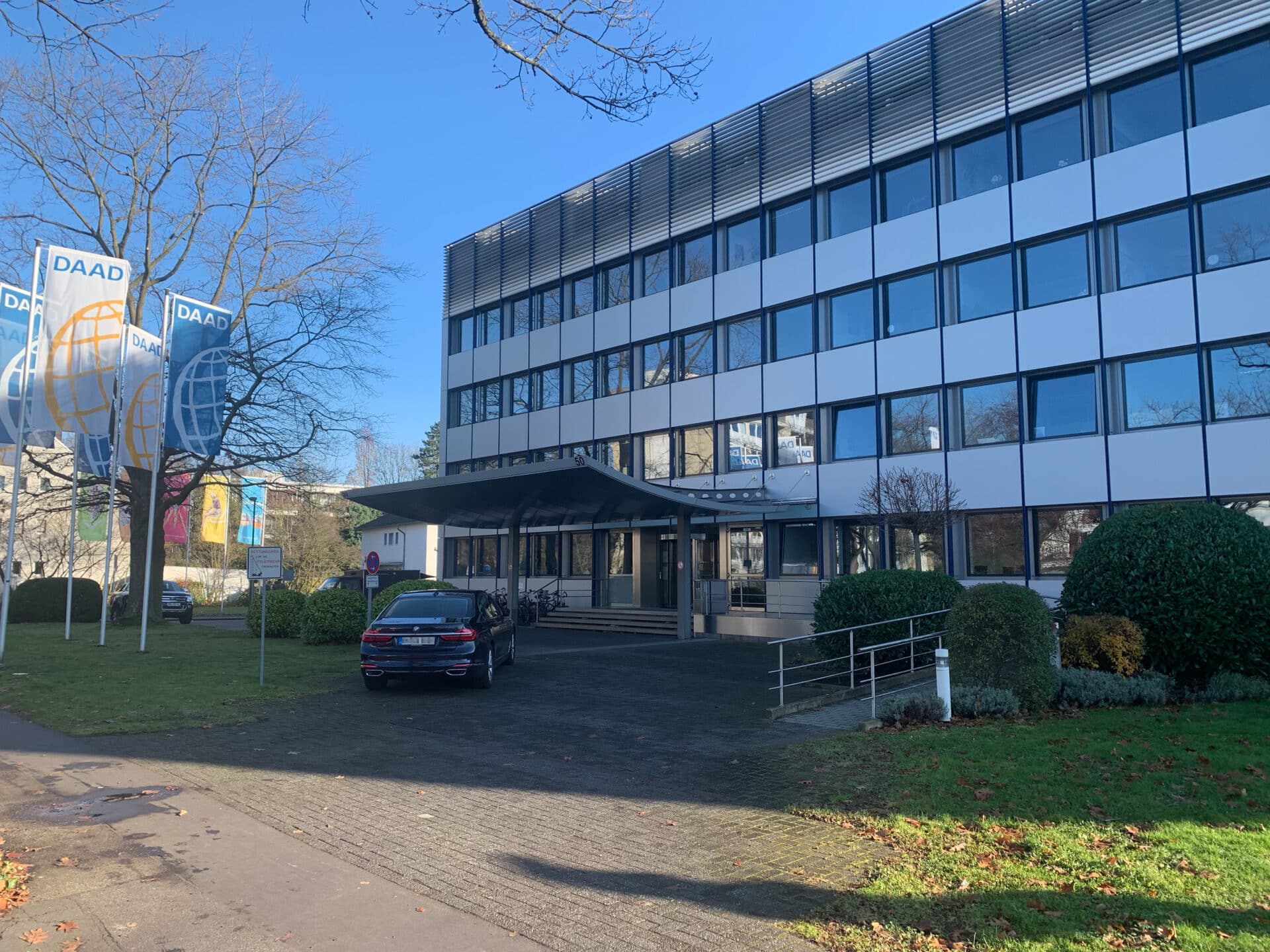Success Story
From a document-based workflow to a configurable end-to-end process
The focus of the joint CLC project with the German Academic Exchange Service (DAAD) was clear from the outset: improving the service and usability for scholarship holders and optimizing the application process from submission to post-processing. As one of the world's largest funding organizations for the international exchange of students and academics, the DAAD has a special responsibility in this area.
Where many applicants fill out and submit many forms, the time and cost involved in processing the "flood of forms" increases considerably. Particularly with large volumes of applications from a wide variety of sources, it becomes almost impossible for administrators to maintain an overview one day. The DAAD also identified that the number of applicants was mainly declining because the document template no longer appeared up-to-date - a solution in the form of a modern app that could be implemented in the leading SAP system was desired. The DAAD found a competent partner for this in CLC xinteg.

What are the tasks of the DAAD?
The most important activities of the DAAD This includes not only awarding scholarships and promoting the internationalization of German universities and research. Strengthening German studies and the German language abroad is also an extensive part of the staff's work. Supporting developing countries in establishing efficient universities and acting as the National Agency for European University Cooperation are also part of the remit of the institution, which is based centrally in Bonn. Since 1950, the DAAD has supported a total of around 1,545,000 people at 17 branch offices around the world, with 85,078 grants being awarded in 2019.
Goals & requirements of the project
During the detailed assessment of the overall objective of "improving the service for the scholarship holder and removing technological barriers", finely defined requirements gradually emerged:
Implementation of a modern application with better usability
Generation of a web application that can be used on any device
Replacement of the previous document-based application scenarios
Integration into the existing processing software in SAP
Benefits & advantages
Quite soon after the project implementation, the first positive effects on the workflow could be recognized and named:
The processing speed of applications increased abruptly
The significantly improved usability for the applicant makes filling out the form much easier
Data quality has been effectively optimized for the administrator through guided applications
The contemporary and modern external presentation, adapted to the existing DAAD design, was realized on the basis of the SAP Fiori standard
Dynamic form applications as workflow tuners
The previously mainly Word- and PDF-based and less automated process is now fully mapped by the dynamic web application CLC-PADD® S Suite+. CLC-PADD® S Suite+ is based on the SAP Fiori standard. The dynamic form application optimizes data quality, offers significantly better usability for applicants and clerks and considerably increases processing speed. It also ensures a modern external presentation. Particularly important for the processing side: changes to the forms can be made quickly and easily through pure configuration and without programming.
German Academic Exchange Service (DAAD)
The German Academic Exchange Service (DAAD) is one of the world's largest funding organizations for the international exchange of students and academics. In addition to its headquarters in Bonn, the DAAD maintains a network of branch offices and information centers worldwide.
INDUSTRY
Funding organization, supported among others by
Federal funds from various ministries
LOCATION
Head office
53175 Bonn


